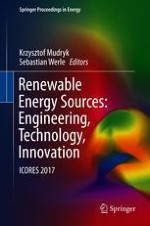2018 | OriginalPaper | Chapter
Possibility of Using Energy Crops for Phytoremediation of Heavy Metals Contaminated Land—A Three-Year Experience
Authors : Marta Pogrzeba, Jacek Krzyżak, Szymon Rusinowski, Anja Hebner, Kathrin Kopielski, Sebastian Werle, Izabela Ratman-Kłosińska
Published in: Renewable Energy Sources: Engineering, Technology, Innovation
Publisher: Springer International Publishing
Activate our intelligent search to find suitable subject content or patents.
Select sections of text to find matching patents with Artificial Intelligence. powered by
Select sections of text to find additional relevant content using AI-assisted search. powered by
